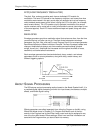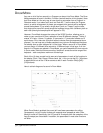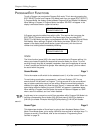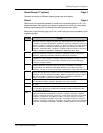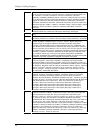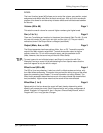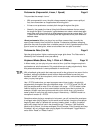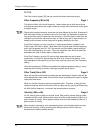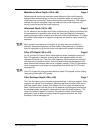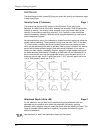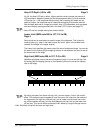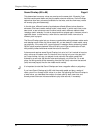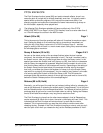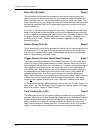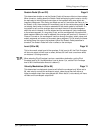
Chapter 6: Editing Programs
FILTER
The Filter function (press [70]) lets you control the tone of each sound layer.
Filter Frequency (00 to 99) Page 1
This sets the filter's initial cutoff frequency. Lower values give a duller sound since
this removes more harmonics; higher values let through more harmonics, which gives
a brighter sound.
TIP:
Signals with complex harmonic structures are most affected by the filter. Examples: A
sine wave has virtually no harmonics so you will not hear any significant changes as
long as the filter cutoff is higher than the note pitch. If the filter cutoff is lower than the
note pitch, you will either not hear the note, or it will be very soft. A harmonically-rich
sample (such as brass or white noise) will be greatly affected by the filter.
If the Filter Frequency is set to maximum, in most cases all other variables in the
Filter function will have no effect. Most other filter functions raise the filter frequency,
and it can't be greater than 99. So if you want to use filter effects, proper setting of
this initial cutoff frequency is crucial. This is the “baseline” from which all other filter
parameters will raise or lower (open or close) the filter.
If the Filter Frequency is set to 00, and no other parameters are set to raise it
dynamically, no sound will pass through the filter at all--there will be silence. If the
Amp settings are wide open and you can't hear anything, check the Filter Frequency
setting.
Since the waveforms in ROM are recorded at the brightest possible setting, in many
cases dynamic filtering is crucial to making a program sound natural.
Filter Track (On or Off) Page 2
When off, the filter cutoff remains constant across the keyboard. Higher notes will be
more affected than lower notes, since the filter cutoff is comparatively lower for higher
notes than lower ones.
When on, the filter frequency tracks the keyboard pitch. Therefore, if using the filter
creates a particular harmonic structure when you play one key, playing a different key
will shift the filter frequency to maintain the same harmonic structure.
Velocity (-99 to +99) Page 3
At +00, velocity has no effect on the filter cutoff. With positive values, playing harder
increases the filter cutoff. More positive values drive the cutoff frequency higher for a
given amount of velocity. More negative values drive the cutoff frequency lower for a
given amount of velocity.
TIP:
Many acoustic instruments, such as acoustic guitars, sound brighter when you play
them more forcefully. Adding a little positive velocity control over the filter can
simulate more realistic acoustic sounds.
60 QS7/QS8 Reference Manual



